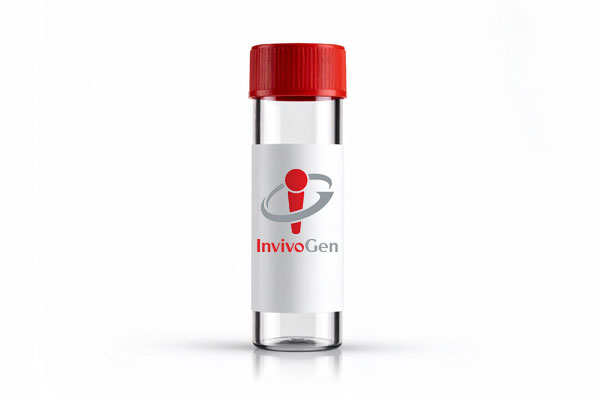ssPolyU Naked
-
Cat.code:
tlrl-sspu
- Documents
ABOUT
TLR8 Agonist - RNA homopolymer - non-complexed
Poly(U) is a lyophilized preparation of a synthetic single-stranded poly-uridine (ssPolyU), able to activate the Toll-like receptors TLR7 and/or TLR8.
Single-stranded RNA (ssRNA) has been identified as the natural ligand of TLR7 and TLR8 [1]. ssRNA derived from HIV-1 or the influenza virus were shown to induce the production of proinflammatory cytokines in pDC [2,3]. This induction was reproduced using polyU or GU-rich oligoribonucleotides (ORNs).
Description
InvivoGen's ssPolyU Naked is not complexed and therefore, not protected from degradation. Still, ssPolyU Naked is a specific agonist of human TLR8 as verified by using our HEK-Blue™ reporter cell lines (see figure). Moreover, it activates mouse TLR7 [data not shown].
InvivoGen also offers a complexed version ssPolyU/LyoVec™
Key features of ssPolyU Naked
- Specific activator of human TLR8
- No activation of human TLR7
- Complexed ssPolyU/LyoVec™ is available
- Non-complexed
- Each lot of ssPolyU Naked is functionally tested
![]() Read our review about TLR7 and TLR8.
Read our review about TLR7 and TLR8.
References:
1. Heil F. et al., 2004. Species-specific recognition of single-stranded RNA via toll-like receptor 7 and 8. Science. 5;303(5663):1526-9.
2. Alter G. et al., 2007. Single-Stranded RNA Derived from HIV-1 Serves as a Potent Activator of NK Cells. J Immunol. 178:7658-7666.
3. Hornung V. et al., 2005. Sequence-specific potent induction of IFN-alpha by short interfering RNA in plasmacytoid dendritic cells through TLR7.Nat Med. 11(3):263-70.
All products are for research use only, and not for human or veterinary use.
SPECIFICATIONS
Specifications
1 - 10 μg/ml
1 mg/ml in water
PRR cellular assays
Each lot is functionally tested and validated using cellular assays.
CONTENTS
Contents
-
Product:ssPolyU Naked
-
Cat code:tlrl-sspu
-
Quantity:10 mg
10 ml of endotoxin-free water
Shipping & Storage
- Shipping method: Room temperature
- -20°C
- Avoid repeated freeze-thaw cycles
Storage:
Caution:
DOCUMENTS
Documents
Technical Data Sheet
Safety Data Sheet
Validation Data Sheet
Certificate of analysis
Need a CoA ?



